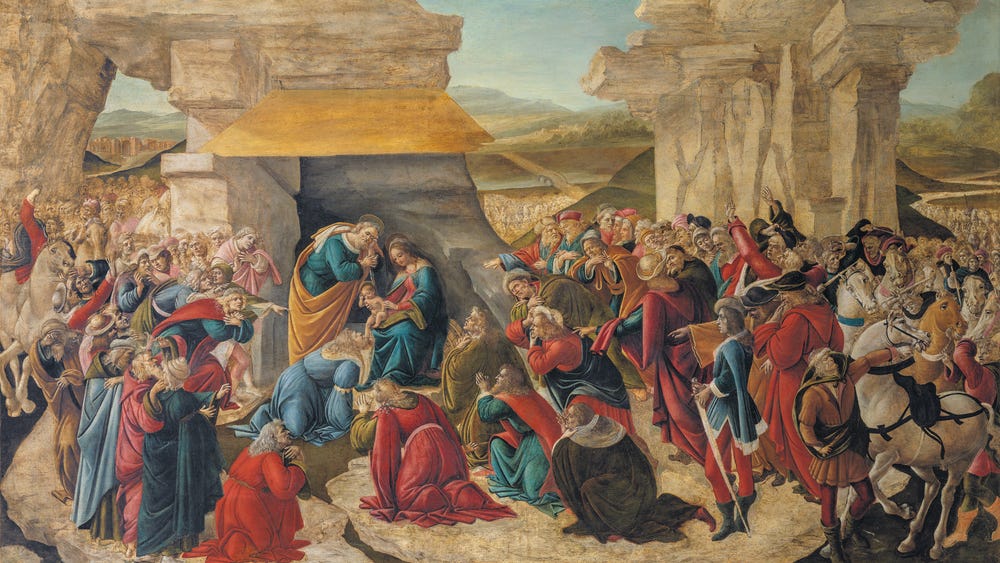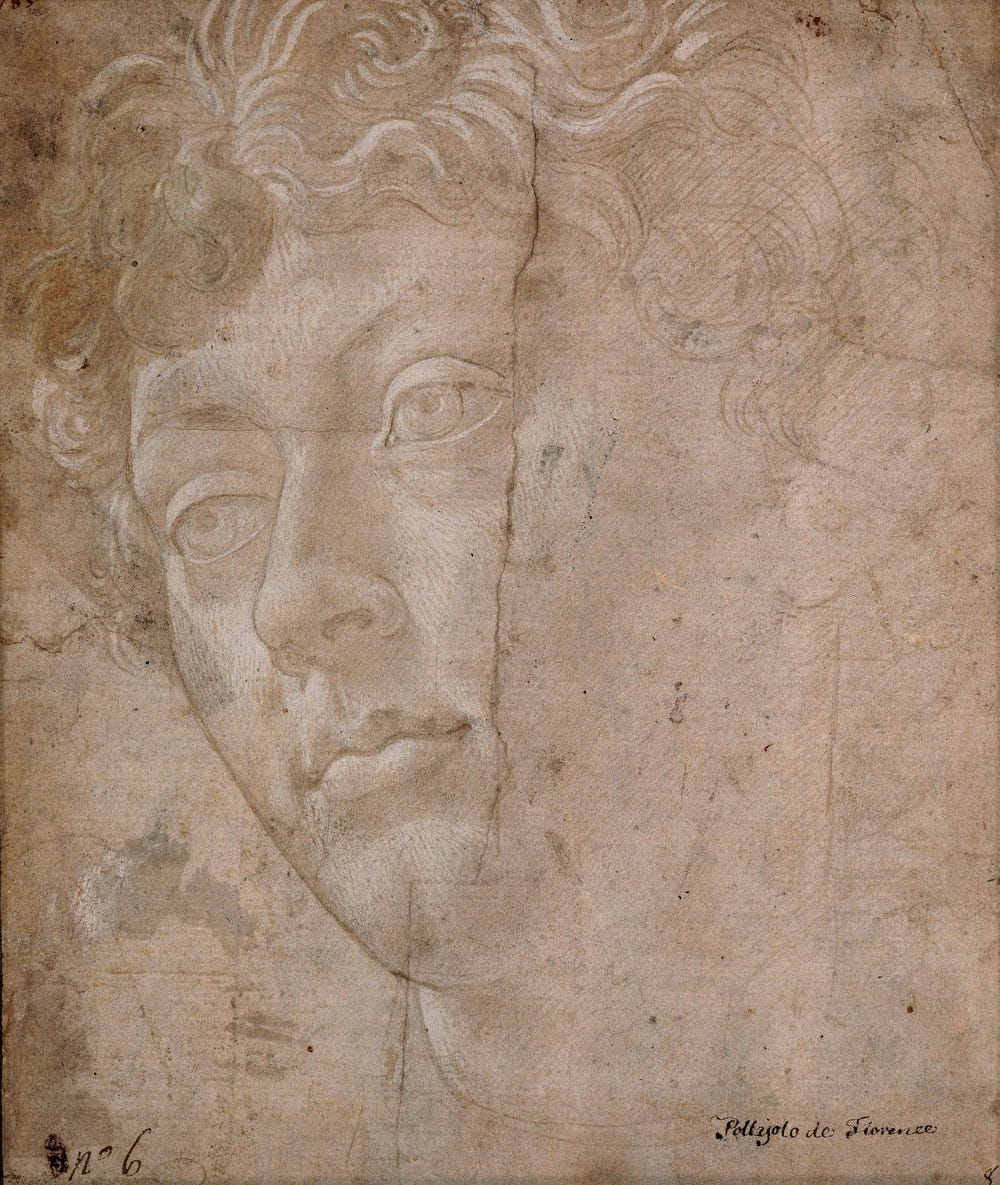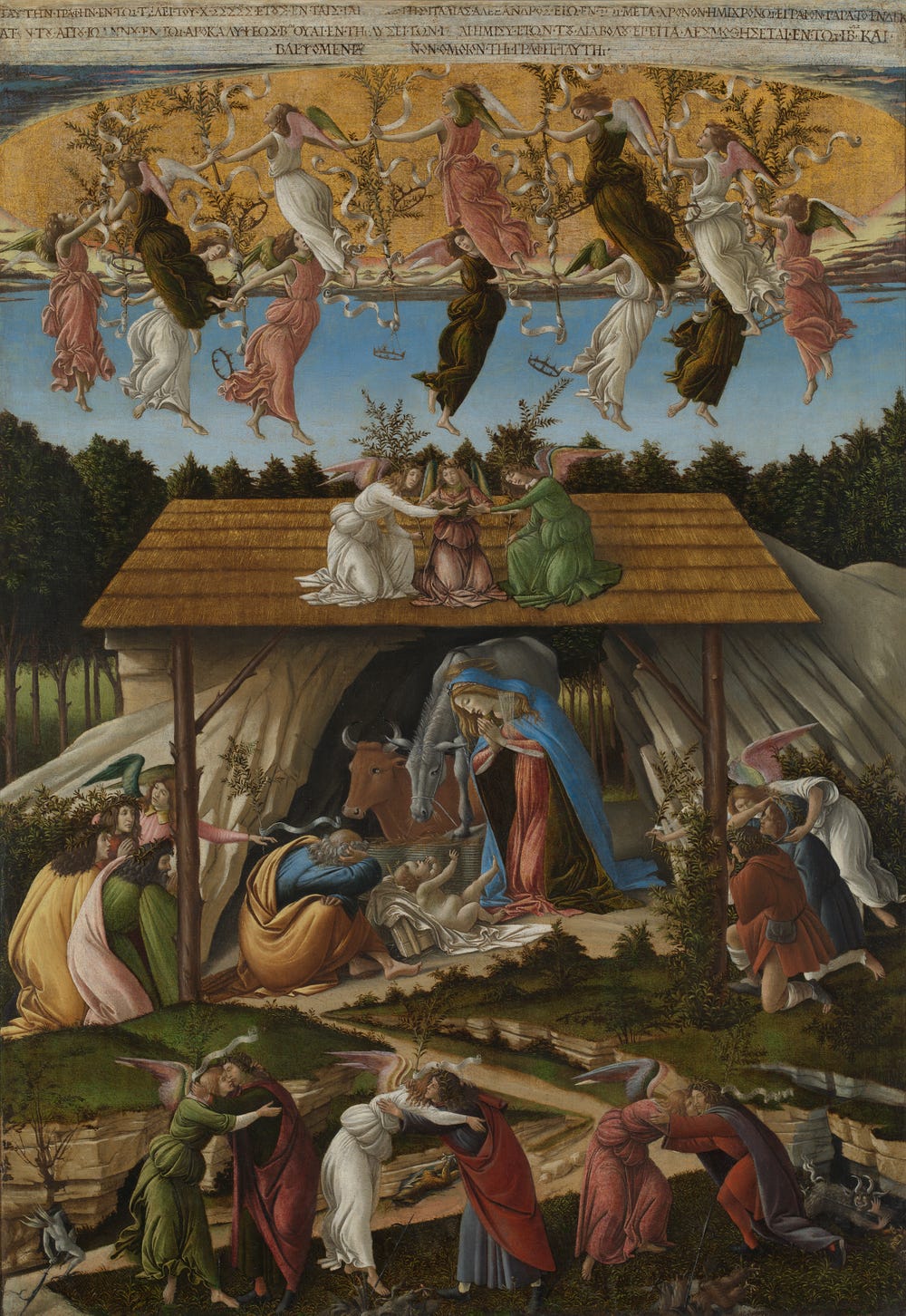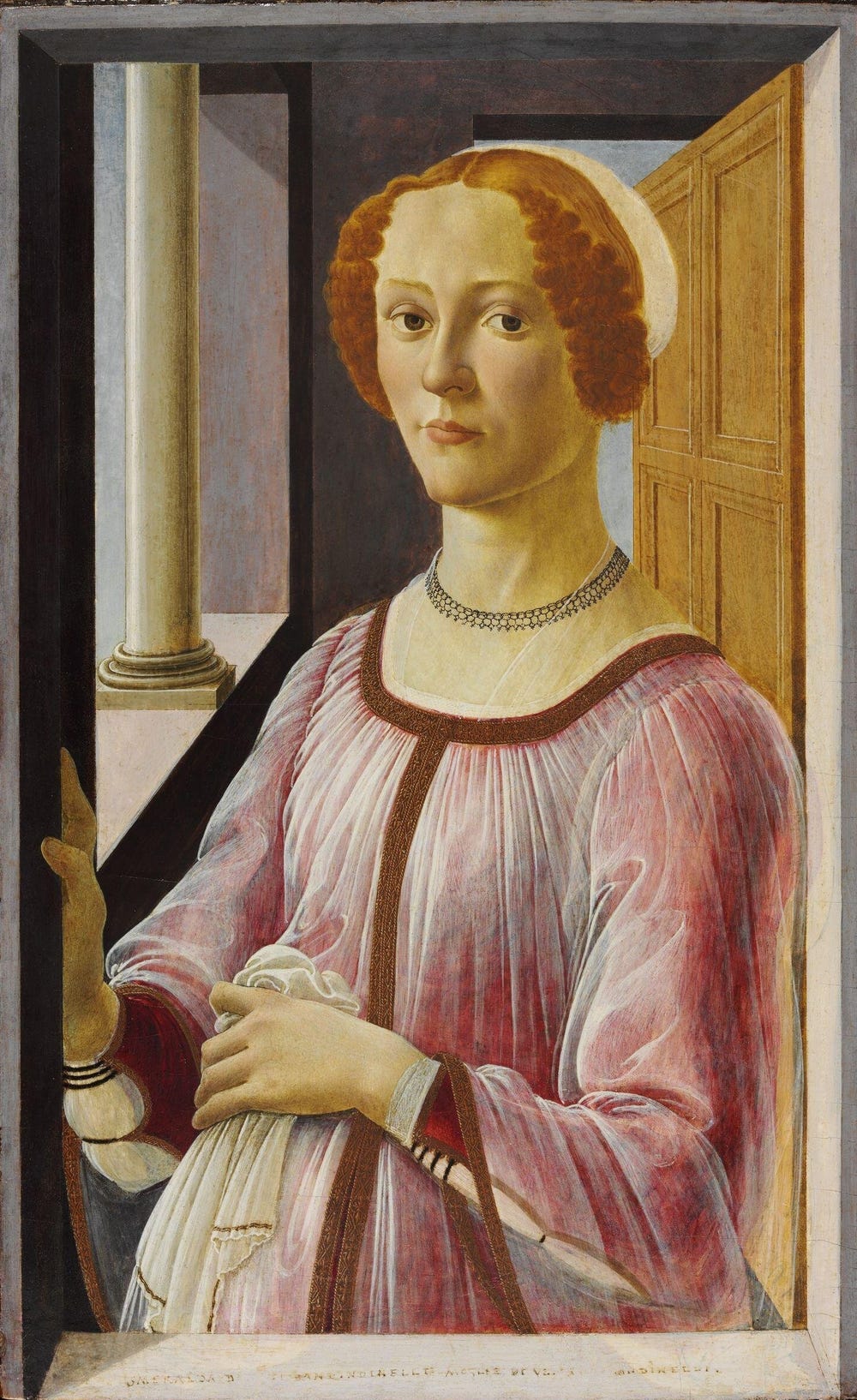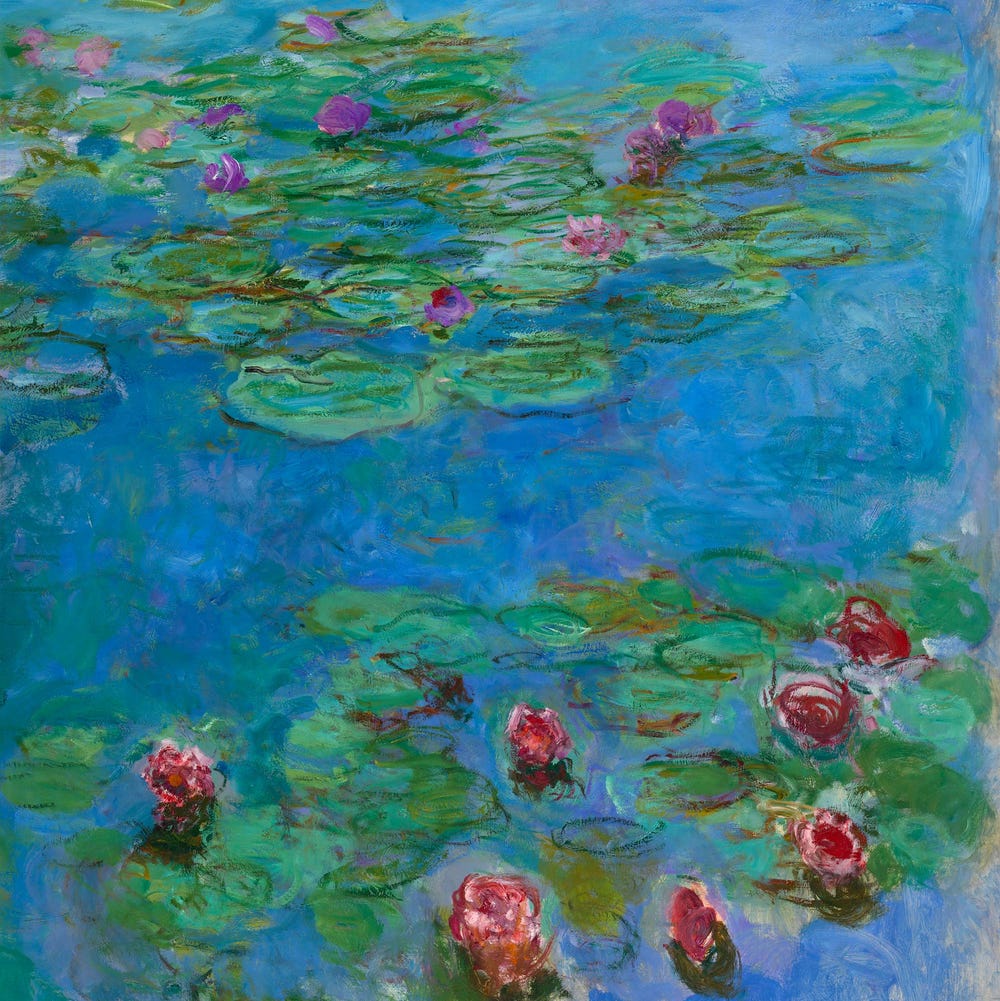5 Things to Know about Botticelli
By Magnolia Molcan, senior web managing editor
October 26, 2023
Sandro Botticelli (Italian, Florence, ca. 1445–1510), Adoration of the Magi (detail), ca. 1500–1506. Tempera on poplar panel, 42 5/16 × 68 1/8 in. (107.5 × 173 cm). Gallerie degli Uffizi
Sandro Botticelli is one of the most famous artists of the Italian Renaissance. But did you know his work was largely forgotten for nearly 300 years? Read on to discover the origins of his nickname, secret messages in his work, how he revolutionized painting, and more.
1. Botticelli is actually a nickname.
Botticelli’s full name was Alessandro di Mariano di Vanni Filipepi. His older brother Giovanni’s nickname was Botticello (meaning “small barrel”), likely because he liked to drink, had a nice-size belly, or both. The nickname was passed down to Alessandro as “Botticelli.”
Sandro Botticelli (Italian, Florence, ca. 1445–1510), Head of a Youth, Turned to the Left, ca. 1480. Silverpoint, gray wash, heightened with white, on gray prepared paper, 8 1/16 × 7 in. (20.5 × 17.9 cm). Musée des Beaux-Arts, Rennes. © RMN-Grand Palais / Art Resource, NY. Photo: Adelaide Beaudoin
2. He lived and worked in the same neighborhood his entire life.
Botticelli grew up in Ognissanti (“all saints”), Florence. That’s where his parents and brothers lived. And that’s where he established and maintained his workshop, on Via Nuova d’Ognissanti (today known as Via del Porcellana). It’s even where he died. You can visit his grave in the Chiesa di San Salvatore di Ognissanti church.
3. He embedded secret messages in his paintings.
Sandro Botticelli (Italian, Florence ca. 1445–1510 Florence), The Nativity of Christ (Mystic Nativity), 1501. Oil on canvas, 42 ¾ x 29 ½ in. (108.6 x 74.9 cm). The National Gallery, London, Bought, 1878, NG1034 © The National Gallery, London
Botticelli included veiled messages and hidden meanings in his works. At the top of The Nativity of Christ (Mystic Nativity) (1501), he includes an inscription in Greek. Angels in the painting hold crowns with paper scrolls that also have tiny inscriptions on them. They are all veiled references to the religious teachings of Girolamo Savonarola, who had been deemed a heretic by the Pope.
4. He was the first in Italy to paint a portrait of a woman looking directly at the viewer.
Sandro Botticelli (Italian, Florence, ca. 1445–1510), Portrait of a Lady at the Window, Known as Smeralda Bandinelli, ca. 1475. Tempera on poplar panel, 25 7/8 × 16 7/16 in. (65.7 × 41.7 cm). Victoria and Albert Museum, Bequeathed by Constantine Alexander Ionides
Before Botticelli, women were typically depicted in profile. They were represented as objects, the property of their fathers or husbands. In the revolutionary Portrait of a Lady at the Window, Known as Smeralda Bandinelli (ca. 1475), Botticelli defied that convention. Here, the lady has agency, looking directly out at us.
5. He fell out of fashion and was only rediscovered in the 19th century.
By the time he died in 1510, Botticelli’s art had completely fallen out of fashion. He was largely forgotten for nearly 300 years, until he was rediscovered by the Pre-Raphelites in the 19th century. This group of English painters and poets rebelled against classical traditions, instead celebrating individuality, and were drawn to Botticelli’s expressive and fluid style. Portrait of a Lady at the Window was even in the personal collection of one of the group’s cofounders, Dante Gabriel Rossetti.
